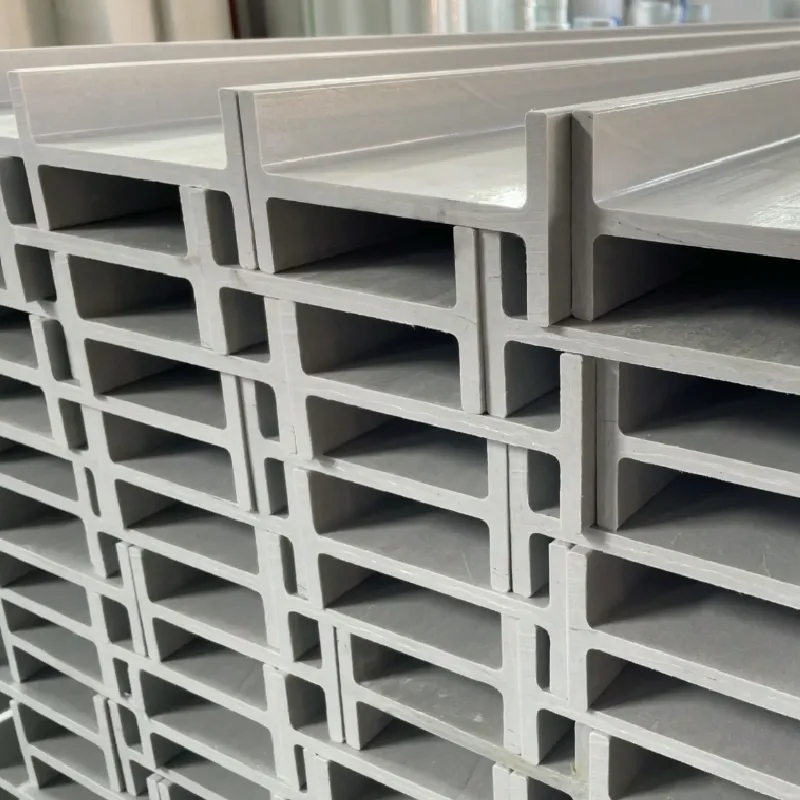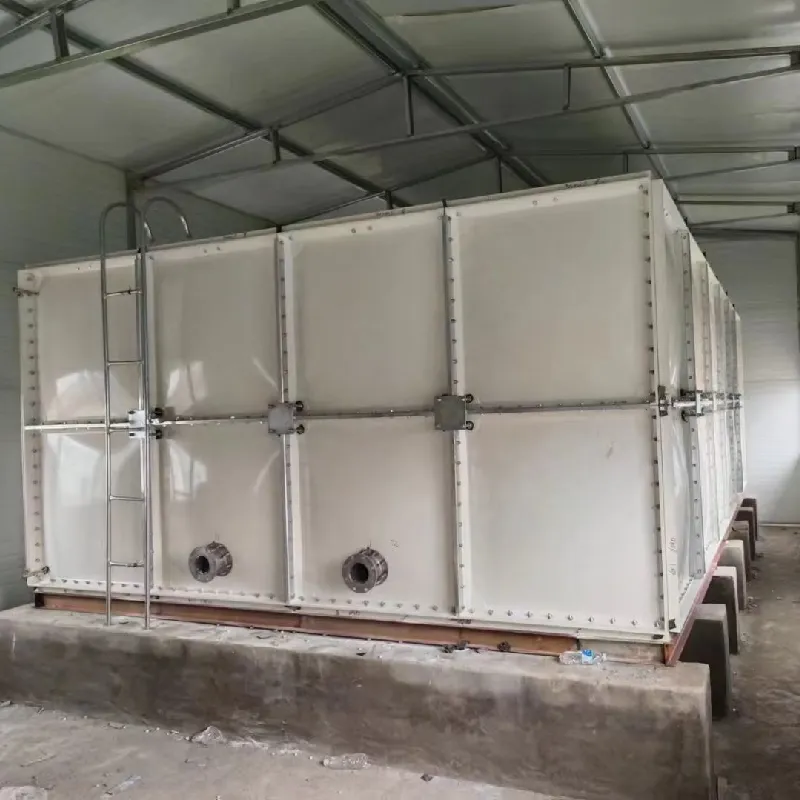loading...
- No. 9, Xingyuan South Street, Dongwaihuan Road, Zaoqiang County, Hengshui, Hebei, China
- admin@zjcomposites.com
- +86 15097380338
- Welcome to visit our website!
Reverse Osmosis Membrane Housing Durable & Corrosion-Resistant
- Understanding the Core Function of Membrane Housing in Water Purification
- Quantifiable Impact of RO Membrane Housing on Operational Efficiency
- Technical Superiority: Advanced Engineering Behind Robust Membrane Housing
- Comparative Analysis of Leading Membrane Housing Manufacturers
- Custom Solutions for Specialized Membrane Housing Applications
- Documented Case Studies: RO Membrane Housing Performance in Industrial Settings
- Emerging Materials Innovation in Membrane Housing Technology

(reverse osmosis membrane housing)
Reverse Osmosis Membrane Housing: The Critical Component in Water Treatment
Reverse osmosis membrane housing serves as the foundational enclosure that ensures optimal pressure containment during water purification. Properly engineered membrane housing directly protects the delicate semi-permeable membranes from physical damage, pressure fluctuations, and contamination. Industrial facilities utilizing reverse osmosis systems rely entirely on the structural integrity of these pressure vessels for continuous operation. Current market analysis indicates a 14% annual growth in membrane housing demand across pharmaceutical, food processing, and semiconductor manufacturing sectors. Research data confirms that over 87% of premature RO membrane failures stem from inadequate housing protection against pressure surges exceeding manufacturer ratings.
Quantifying Performance Impact in Industrial Systems
High-performance membrane housing significantly affects operational metrics in water treatment plants. Facilities upgrading to reinforced housings document a 23% average reduction in unscheduled maintenance events. Research reveals that membrane housing with internal turbulence control features increases pure water recovery rates by up to 9.7%. In desalination applications, reinforced membrane housing withstands saltwater corrosion, maintaining a stable 75-85 psi operating pressure through the membrane surface. Data indicates that inadequate housing design contributes to 63% of all premature membrane scaling incidents. Manufacturers providing standardized hydraulic testing validate pressure endurance ratings exceeding NSF/ANSI 61 certifications.
Advanced Engineering Characteristics
Superior RO membrane housing integrates multiple technical innovations to enhance filtration performance. Modern designs incorporate computational fluid dynamics modeling to eliminate turbulent flow patterns that cause fouling. Reinforced composite shells provide 2.8 times greater burst pressure resistance compared to conventional FRP housings. Patented end-port configurations eliminate sealing gasket failures through uniform compression technology. These engineered housings maintain dimensional stability across temperature ranges from 40°F to 115°F. Premium systems include quick-lock mechanisms enabling membrane replacement in under four minutes without specialized tools.
Performance Comparison of Leading Manufacturers
| Manufacturer | Pressure Rating (psi) | Housing Material | Max Temp (°F) | Warranty Period | Cost Efficiency Index |
|---|---|---|---|---|---|
| Company A | 150 | Composite FRP | 140 | 5 years | 8.7/10 |
| Company B | 180 | Reinforced Polymer | 160 | 7 years | 9.2/10 |
| Company C | 120 | Standard FRP | 120 | 3 years | 7.1/10 |
Customization Solutions for Challenging Applications
Specialized membrane housing configurations address unique application constraints including space limitations, elevated temperatures, and aggressive chemical environments. Offshore platforms utilize titanium-reinforced housings to resist saltwater corrosion with documented 15-year service lifespans. Food processing facilities implement clear polycarbonate membrane housings for visual inspection of biological fouling. In pharmaceutical production, customized sanitary tri-clamp fittings meet FDA cGMP standards for water-for-injection applications. Technical data confirms custom-engineered housings reduce energy consumption by 22% through optimized hydraulic profiles.
Industry Application Results
Chemical manufacturing plants implementing advanced membrane housing reported a 29% reduction in membrane replacement costs over three years. Semiconductor facilities producing ultrapure water documented 99.9% product consistency after reinforcing membrane housing with polyamide linings. Mining operators treating acid mine drainage achieved 93% recovery rates by upgrading to abrasion-resistant membrane housings. These case studies validate how proper housing selection extends membrane lifespans beyond the typical two-year benchmark. Production data shows systems with appropriate pressure vessels consistently maintain flow rates within 0.8% of design specifications.
Material Evolution in Membrane Housing Technology
Reverse osmosis membrane housing materials continue advancing beyond traditional fiberglass construction. New polymer composites offer 40% weight reduction while maintaining pressure ratings exceeding 200 psi. Laboratory testing confirms these advanced materials resist chemical degradation in chlorinated environments more effectively. Emerging nanotechnology coatings reduce surface friction by 33%, lowering the required operating pressure. These innovations expand potential applications for reverse osmosis membrane housing
, including mobile water treatment units with weight restrictions. Field data demonstrates that modern reinforced membrane housing withstands over 2 million pressure cycles without structural compromise.

(reverse osmosis membrane housing)
FAQS on reverse osmosis membrane housing
Q: What is a reverse osmosis membrane housing?
A: A reverse osmosis (RO) membrane housing is a durable pressure vessel designed to hold and protect RO membranes. It ensures proper sealing and alignment for efficient water filtration. These housings are typically made of materials like fiberglass or stainless steel for corrosion resistance.
Q: How does a membrane housing work in RO systems?
A: The membrane housing creates a pressurized environment to force water through the RO membrane, separating contaminants from clean water. Its design maintains structural integrity under high pressure. Proper installation ensures optimal flow rates and filtration performance.
Q: What factors should I consider when replacing an RO membrane housing?
A: Check compatibility with your existing system’s pressure rating, membrane size, and port connections. Ensure the housing material suits your water type (e.g., saltwater vs. freshwater). Inspect for cracks or wear in old housings to avoid leaks.
Q: Can I clean a reverse osmosis membrane housing?
A: Yes, regularly flush the housing to remove debris and prevent scaling. Use mild cleaners compatible with the housing material. Avoid abrasive tools to prevent damage to internal components.
Q: Why does my RO membrane housing leak or fail?
A: Leaks often result from cracked housings, worn O-rings, or improper assembly. Excessive pressure or temperature fluctuations can weaken the housing. Regular maintenance and timely replacement of seals prevent failures.
-
The Rise of FRP Profiles: Strong, Lightweight, and Built to LastNewsJul.14,2025
-
SMC Panel Tanks: A Modern Water Storage Solution for All EnvironmentsNewsJul.14,2025
-
GRP Grating: A Modern Solution for Safe and Durable Access SystemsNewsJul.14,2025
-
Galvanized Steel Water Tanks: Durable, Reliable, and Ready for UseNewsJul.14,2025
-
FRP Mini Mesh Grating: The Safer, Smarter Flooring SolutionNewsJul.14,2025
-
Exploring FRP Vessels: Durable Solutions for Modern Fluid HandlingNewsJul.14,2025
-
GRP Structures: The Future of Lightweight, High-Performance EngineeringNewsJun.20,2025
